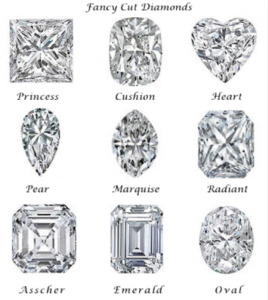 As some of you know, I believe that professional pearl and bead stringers must take the time to learn gemstones and to occasionally venture outside their jewelry-making niche to acquaint themselves with current news and events regarding gemstones.
As some of you know, I believe that professional pearl and bead stringers must take the time to learn gemstones and to occasionally venture outside their jewelry-making niche to acquaint themselves with current news and events regarding gemstones.
So, guys, brace yourselves. This advice extends to royalty and royal engagements such as, yes, indeedy, Prince Harry and Meghan Markel.
“Why?” You might ask with some justification.
Because your credibility is one of your most most important assets. Clients recognize it and rely upon it. You MUST know gemstone basics and you MUST interest yourself in events in which there is broad popular interest. You don’t need to know every detail and you certainly don’t need to become any kind of expert about royal engagement rings, but you do need to be able to discuss them with at least some authority.
In this case, if the avalanche of news about this romance has gotten a little stale on the backend, I’ll do it for you.
Here is what you need to know:
Trilogy Ring – the ring is called a “trilogy” or “trinity” ring where the stones represent the past, present and future. The two flanking round diamonds apparently belonged to Diana (past) while the center stone is from Botswana, a major diamond source and a favorite destination of Harry’s (present and future). DON’T confuse the design with the sentiment. The sentiment, as a selling point, is relatively new with commercial jewelers, however, the design, a center stone flanked by other, smaller stones is as old as a jeweler’s torch.
Setting – The diamonds are set in white gold and the band is yellow gold. Since the nineteenth century platinum has been the preferred metal for setting diamonds because its grayish white color is a perfect complement to diamonds. It’s also very strong. There is no such thing in nature as white gold. To obtain white gold, yellow gold is alloyed with another metal to achieve the white color. Both are beautiful with diamonds and before platinum was discovered, white gold was the preferred metal for setting diamonds.
Diamonds – The center diamond is cushion cut, a somewhat old-fashioned diamond cut with large open facets and rounded corners. (I’ve inserted a chart above with common diamond cuts.) Cleave and Company, which fabricated the ring, isn’t releasing details about the stones, but other experts suggest it’s 2.5 to three carats. (I estimated three carats.) The round diamonds flanking the center stone are estimated at .75 points to one carat. (I thought they might be one carat.)
Design – The company that fabricated the ring has announced with some fanfare that they’ll never “recreate” it. Duh. Despite every attempt by the GIA and others to reduce diamonds to a commodity, every diamond, like every gemstone, is unique. So, of course, Cleave will never recreate the ring. Will the design be recreated? Of course. It’s been around since jewelry first began to be fabricated.
Value – Who knows? The ring is not available for examination and frankly, who cares?
OK, friends, there it is: all you need to know about the engagement ring. And, although I’ve been a little snarky about it, make no mistake: you need to acquaint yourself with this stuff. Your expertise is one of your most important assets. Clients will rely upon it and it will distinguish you from others in your field. Besides, it’s interesting. We got into this because we love jewelry and learning about it is an ongoing pleasure.

